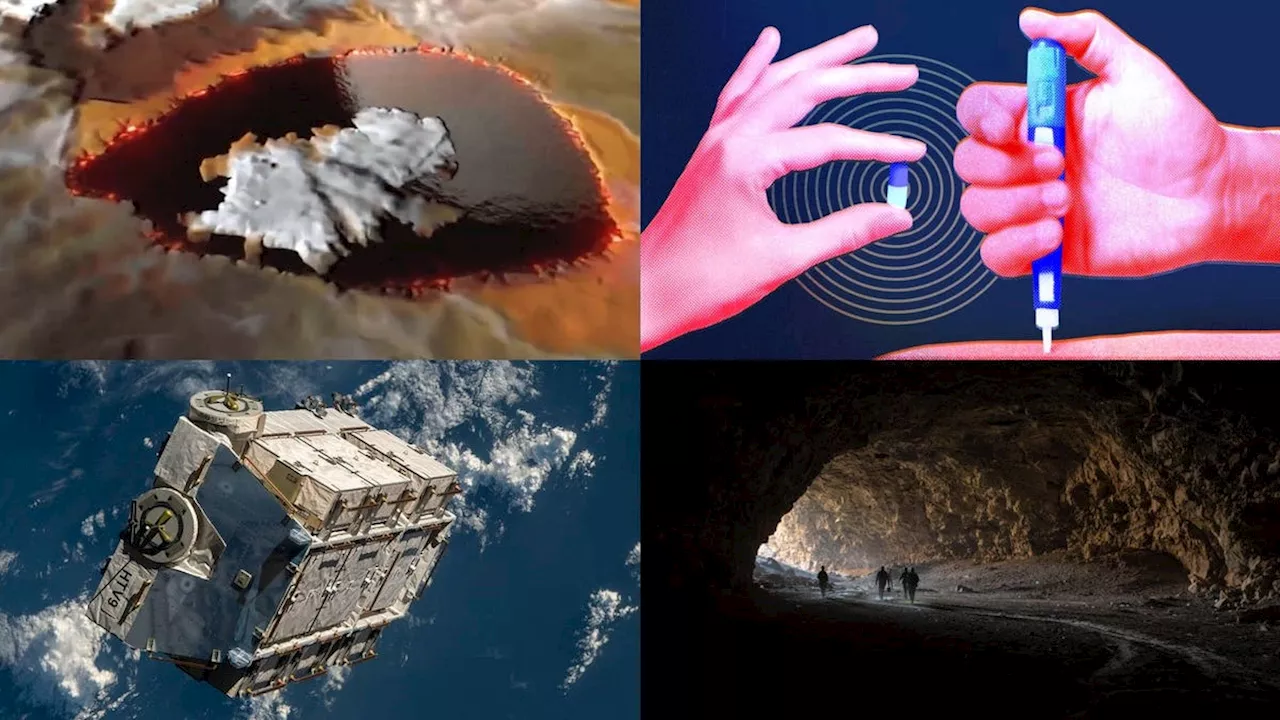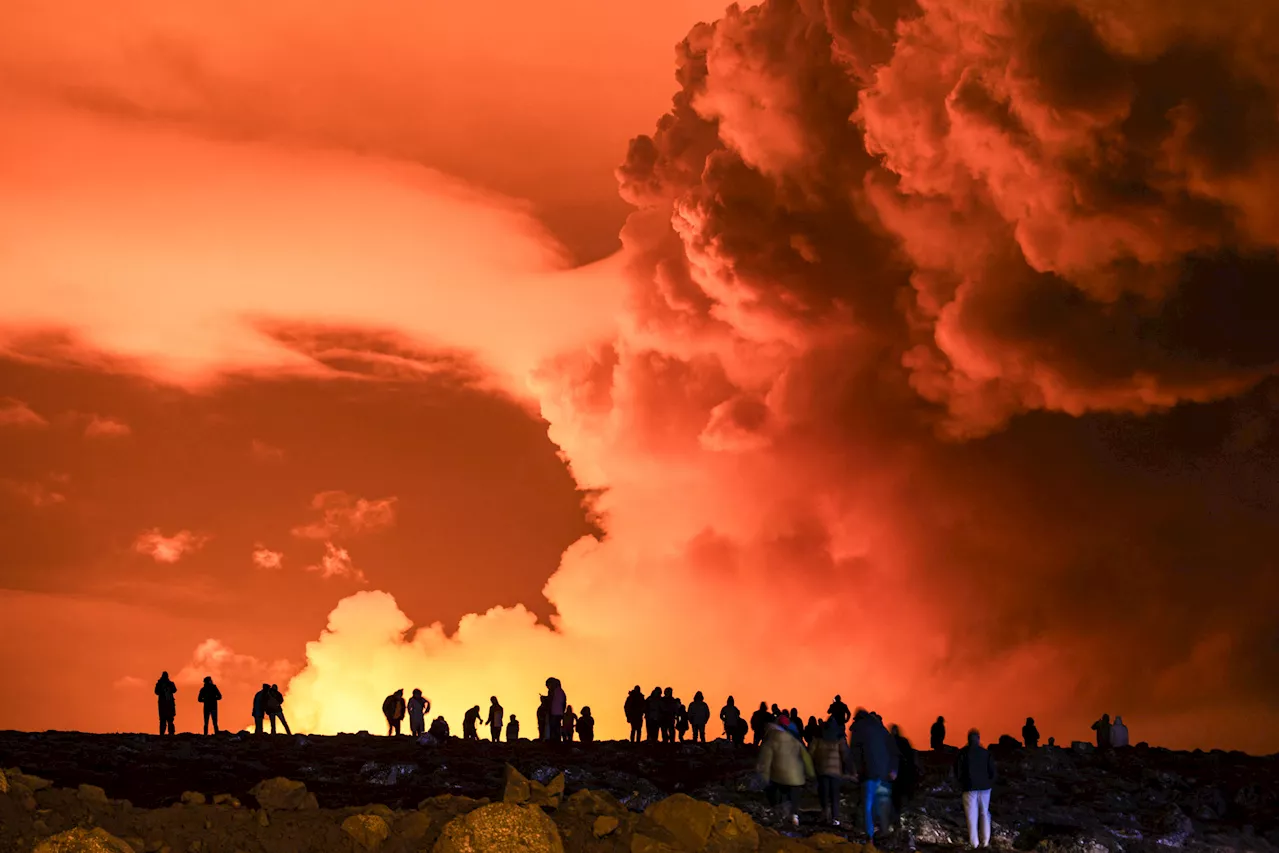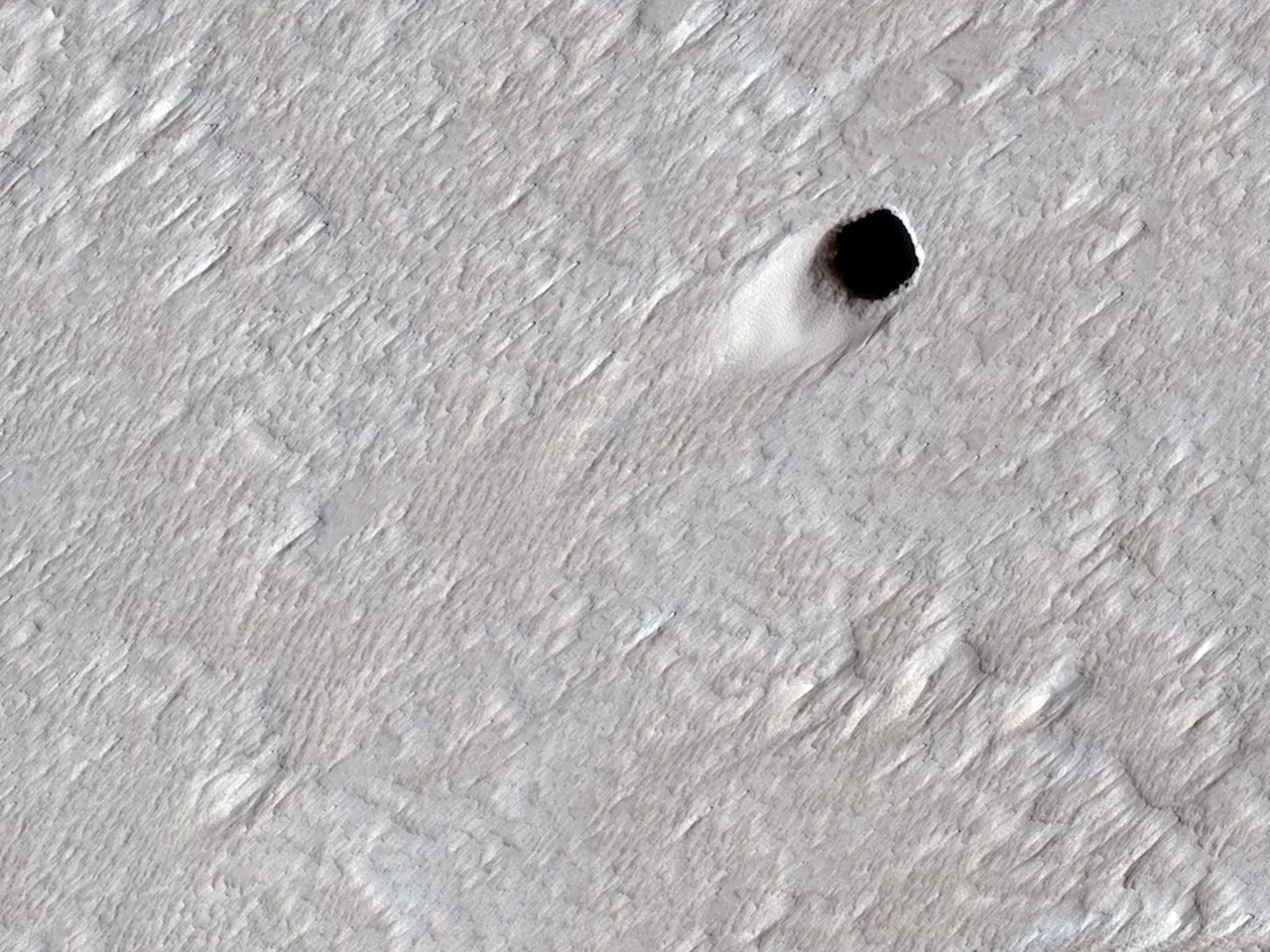A Canary Islands volcano pushed rivers of molten lava through the earth. Now scientists and explorers trek through the cooling underground, looking for insights into life on this planet—and perhaps on others.
In a thermal image, cave specialist Octavio Fernández Lorenzo stands below a lava tube’s skylight. Drawing in outside air, these natural openings moderate temperatures and make exploration of this underground labyrinth possible. A few yards farther in, the tube glows white-hot, becoming impassable. In cotton coveralls, Fernández senses when he’s getting too hot: “It smells like ironing.”A craggy, hostile surface stretches as far as the eye can see, framed by slopes of black ash.
Inside a lava tube opening registering about 140°F, Fernández and fellow cave specialists David Sanz Mangas and Eduardo Díaz Martín collect samples for testing lava composition. Since July 2022, the team has been exploring lava tubes produced by the Tajogaite volcano . These openings are telltale signs of tubes.
Díaz operates a drone—a crucial tool in the precarious landscape—that helps guide Fernández as he attempts to place a temperature probe in a lava tube that’s still cooling nearly two years after the eruption. Fernández must keep a safe distance from the unstable rim of the mouth. After escaping from a vent, sulfur vapor crystallizes over time, as shown in this composite of 29 focus-stacked images. A nativespider species is an early recolonizer. Scientists are probing not only how life thrives in lava but also whether such extreme volcanic environments may be analogous to ones elsewhere in the solar system.
Scientists named the red tube for its hue, thought to be surface oxidation. Beyond the point reached by Fernández, temperatures rise above 200°F. He has helped map more than half of La Palma’s 200 known caves.
Canada Latest News, Canada Headlines
Similar News:You can also read news stories similar to this one that we have collected from other news sources.
 Thousands protest in Spain's Canary Islands over mass tourismThousands of people protested in Tenerife on Saturday, calling for the Spanish island to temporarily limit tourist arrivals to stem a boom in short-term holiday rentals and hotel construction that is driving up housing costs for locals.
Thousands protest in Spain's Canary Islands over mass tourismThousands of people protested in Tenerife on Saturday, calling for the Spanish island to temporarily limit tourist arrivals to stem a boom in short-term holiday rentals and hotel construction that is driving up housing costs for locals.
Read more »
 NASA Spacecraft Sees a Lava Lake With Islands on Jupiter's Moon IoPlus: Why Ozempic and other new weight-loss drugs aren't likely to be a repeat of the fen-phen crisis.
NASA Spacecraft Sees a Lava Lake With Islands on Jupiter's Moon IoPlus: Why Ozempic and other new weight-loss drugs aren't likely to be a repeat of the fen-phen crisis.
Read more »
 Ancient Humans Lived Inside a Lava Tube, Scientists FindScience and Technology News and Videos
Ancient Humans Lived Inside a Lava Tube, Scientists FindScience and Technology News and Videos
Read more »
 Iceland Volcano Eruption: Scientists Issue Urgent Lava WarningThe Icelandic Meteorological Office has warned that increased pressure and ground lift has been noted beneath Svartsengi on the Reykjanes Peninsula.
Iceland Volcano Eruption: Scientists Issue Urgent Lava WarningThe Icelandic Meteorological Office has warned that increased pressure and ground lift has been noted beneath Svartsengi on the Reykjanes Peninsula.
Read more »
 Mathematical Method to Estimate Lava Tube SizeA new paper by Edward Williams and Laurent Montési of the University of Maryland’s Department of Geology presents a mathematical way to estimate the size of a lava tube using remote sensing techniques. The paper describes the relationship between the ridge height of a surface above a lava tube and the height of the lava tube’s roof. Physical modeling was used to determine the relationship between roof thickness and the shape of the lava tunnel.
Mathematical Method to Estimate Lava Tube SizeA new paper by Edward Williams and Laurent Montési of the University of Maryland’s Department of Geology presents a mathematical way to estimate the size of a lava tube using remote sensing techniques. The paper describes the relationship between the ridge height of a surface above a lava tube and the height of the lava tube’s roof. Physical modeling was used to determine the relationship between roof thickness and the shape of the lava tunnel.
Read more »
 Light pollution affects coastal ecosystems, too—this underwater 'canary' is warning of the impactsIn the early 20th century, canaries were used as early warning systems in coal mines to alert miners to rising levels of carbon monoxide.
Light pollution affects coastal ecosystems, too—this underwater 'canary' is warning of the impactsIn the early 20th century, canaries were used as early warning systems in coal mines to alert miners to rising levels of carbon monoxide.
Read more »
